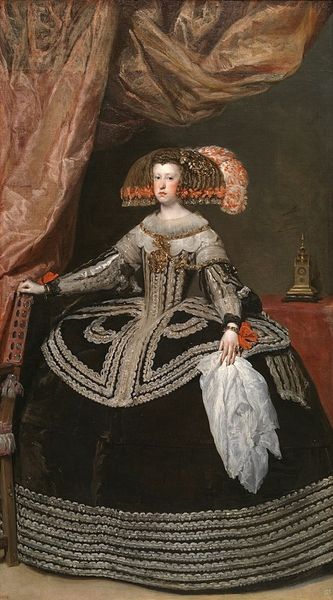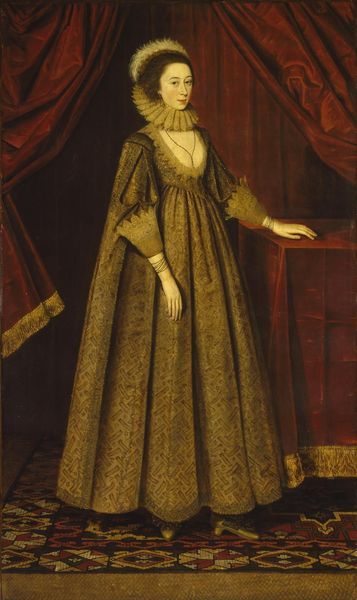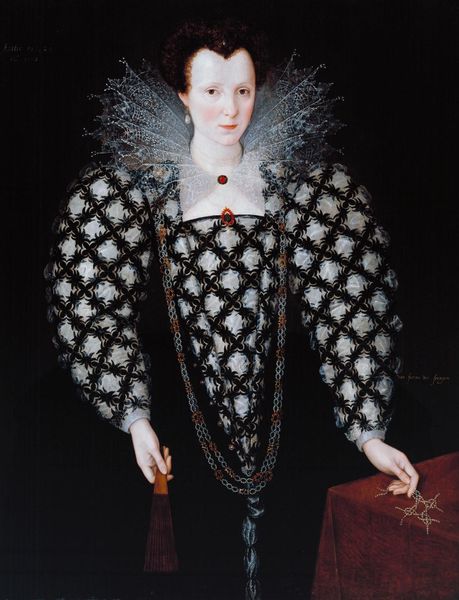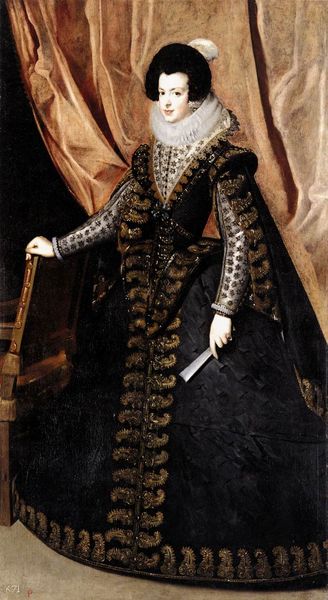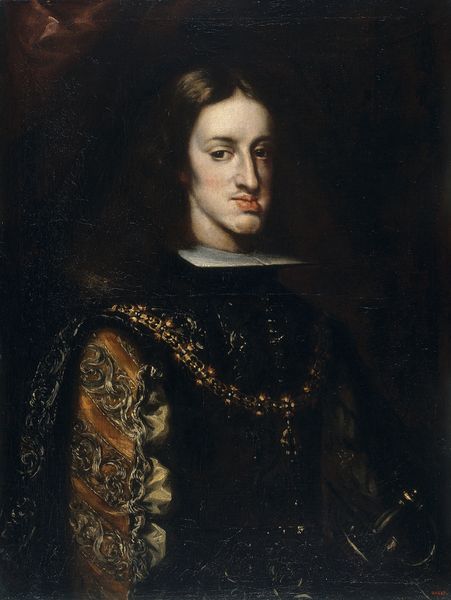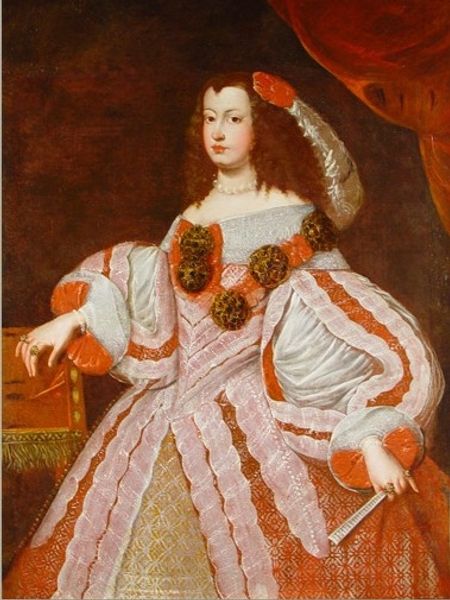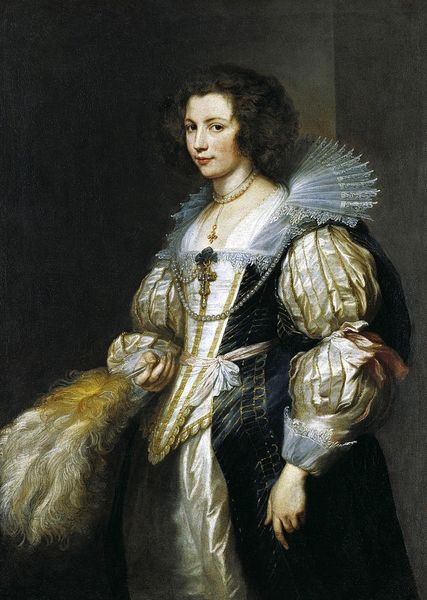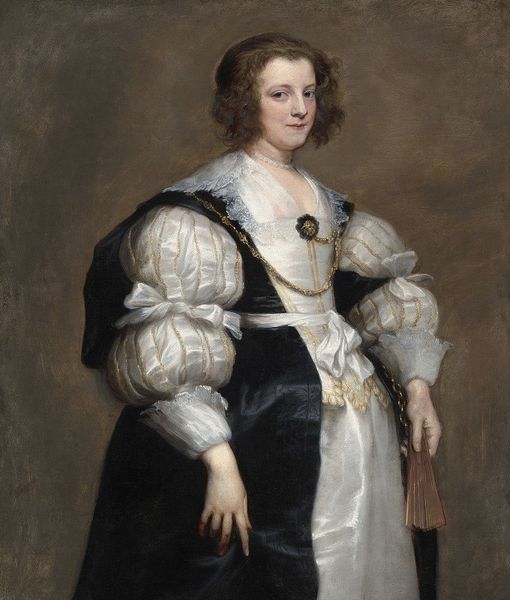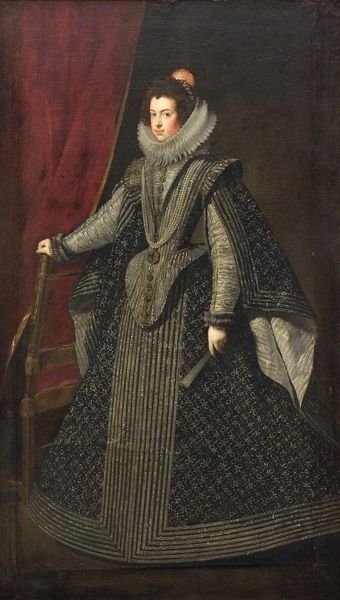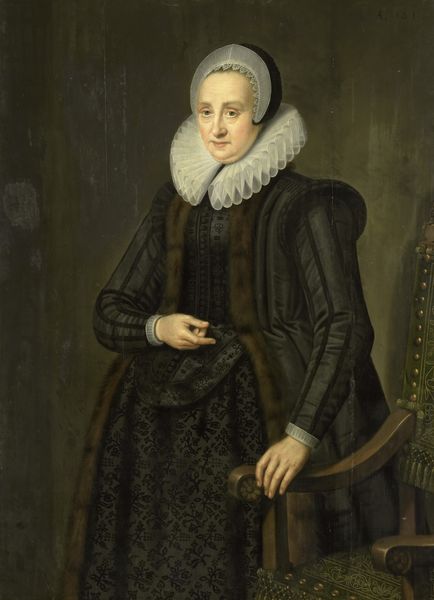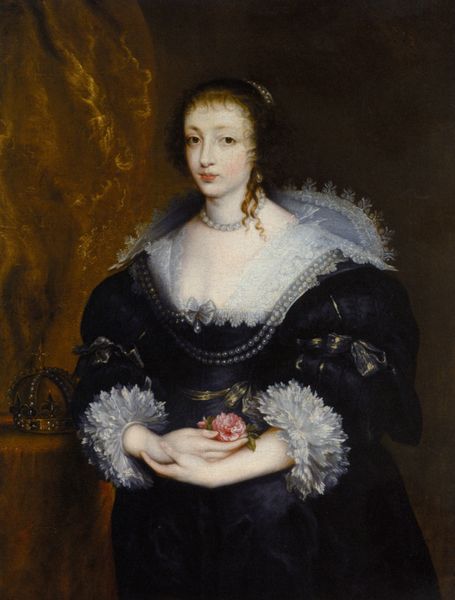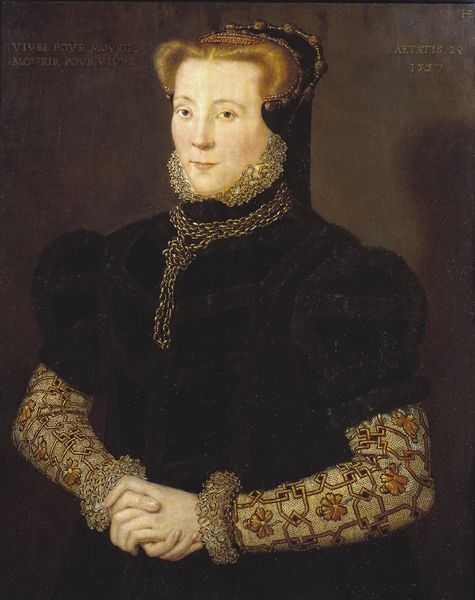
painting, oil-paint
#
portrait
#
baroque
#
painting
#
oil-paint
#
history-painting
Dimensions: 126.4 × 101.6 cm (49 3/4 × 40 in.)
Copyright: Public Domain
Curator: Let’s discuss this portrait hanging at the Art Institute of Chicago. It's identified as "Isabella of Bourbon, Wife of Philip IV of Spain,” an oil painting dating back to about 1632. Editor: It exudes an undeniable solemnity. The dark, rich browns, contrasted with the cool detachment in her gaze and the luxurious pearls, create an impression of dignified constraint. Curator: Notice the artist's technique, particularly in rendering the elaborate fabric. It’s a showcase of visual patterning, of baroque detail creating the illusion of depth and texture. The precise articulation of the pearl adornments against the rigid structure of her dress really defines the image. Editor: But beyond technical display, isn’t it an exercise in power? Isabella is presented as an emblem of Habsburg authority, draped in layers that signify status and control within a rigid, patriarchal court system. Think of the social expectation loaded into the act of portrayal itself. Curator: Certainly. Though, structurally, it's about balance. The composition employs a classic pyramidal arrangement with Isabella at its apex. See how the drapery in the background balances with the positioning of her hand holding what appears to be a fan? The symmetry is subtle yet compelling. Editor: True, but let's consider her limited agency within that "balanced" frame. How much choice did Isabella truly have in her representation? It's impossible to ignore the social script at play here – a woman's identity completely interwoven with that of her husband and dynasty. The opulence is quite frankly a gilded cage. Curator: You raise a critical point about agency and the constraints of portraiture in depicting powerful historical figures. But what is undeniable, from an art historical view, is the lasting influence this type of official Baroque portraiture had. Editor: It reminds us how the politics of representation have changed– or often haven't! What echoes still reverberate from canvases such as this? I leave it up to our listeners to seek the deeper understanding within this portrayal of power.
Comments
No comments
Be the first to comment and join the conversation on the ultimate creative platform.
